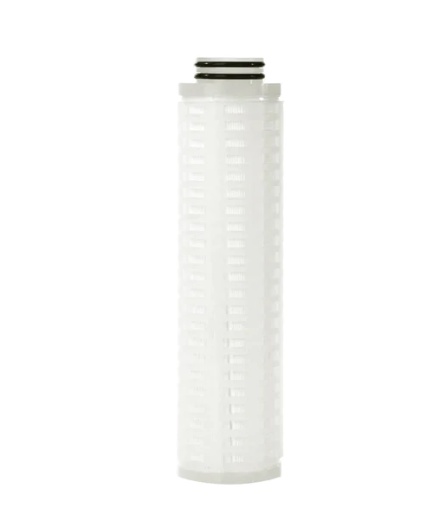PTFE filters are highly regarded for their ability to improve air quality and filtration efficiency in various applications. Here's how PTFE filters achieve these improvements:
-
High Filtration Efficiency: PTFE filters are known for their exceptional filtration efficiency. Their porous structure and fine fibers enable them to capture a wide range of airborne particles, including dust, pollen, bacteria, and even submicron particles. This high filtration efficiency results in cleaner air by removing contaminants that can compromise air quality.
-
Submicron Particle Capture: PTFE filters are capable of capturing submicron particles with great efficiency. This is particularly important in applications where ultra-clean air is required, such as in cleanrooms, laboratories, and hospitals. The ability to trap submicron particles significantly improves air quality by reducing the presence of potentially harmful pollutants.
-
Chemical and Corrosion Resistance: PTFE is highly resistant to chemicals, acids, and corrosive substances. This property makes PTFE filters suitable for applications where airborne contaminants may include acidic or aggressive compounds. PTFE filters are less likely to degrade or react with these chemicals, ensuring long-term filtration performance and maintaining air quality.
-
Moisture Resistance: PTFE filters are hydrophobic, meaning they repel water and resist moisture absorption. This resistance to moisture makes them ideal for applications in humid environments or where exposure to water vapor is a concern. It ensures that the filter's filtration efficiency remains consistent, even in changing environmental conditions.
-
Low Pressure Drop: PTFE filters typically offer low-pressure drop characteristics. This means that they do not significantly impede the flow of air through the filtration system. A low-pressure drop design allows for efficient air circulation, minimizing the energy required to maintain adequate airflow. This, in turn, contributes to energy savings and improved system performance.
-
Easy Maintenance: PTFE filters are easy to clean and maintain. Their non-stick properties prevent particles from adhering strongly to the filter surface. This self-cleaning characteristic reduces the frequency of filter replacement and maintenance, resulting in cost savings and less downtime.
-
Long Filter Life: PTFE filters are known for their durability and longevity. They can withstand extended use in demanding environments without significant performance degradation. Their long filter life ensures consistent filtration efficiency and contributes to improved air quality over an extended period.
-
Versatility: PTFE filters are versatile and suitable for a wide range of applications. They are commonly used in industrial settings, healthcare facilities, laboratories, and even residential HVAC systems. Their adaptability allows for the improvement of air quality in diverse environments.
In summary, Wrentham PTFE filters play a crucial role in improving air quality and filtration efficiency by efficiently capturing airborne particles, including submicron contaminants, resisting chemical and moisture-related challenges, maintaining low pressure drops, offering easy maintenance, and providing long-lasting performance. Whether in cleanrooms, healthcare facilities, or industrial processes, PTFE filters contribute to cleaner and healthier air, making them a valuable asset in various applications.


No comments yet